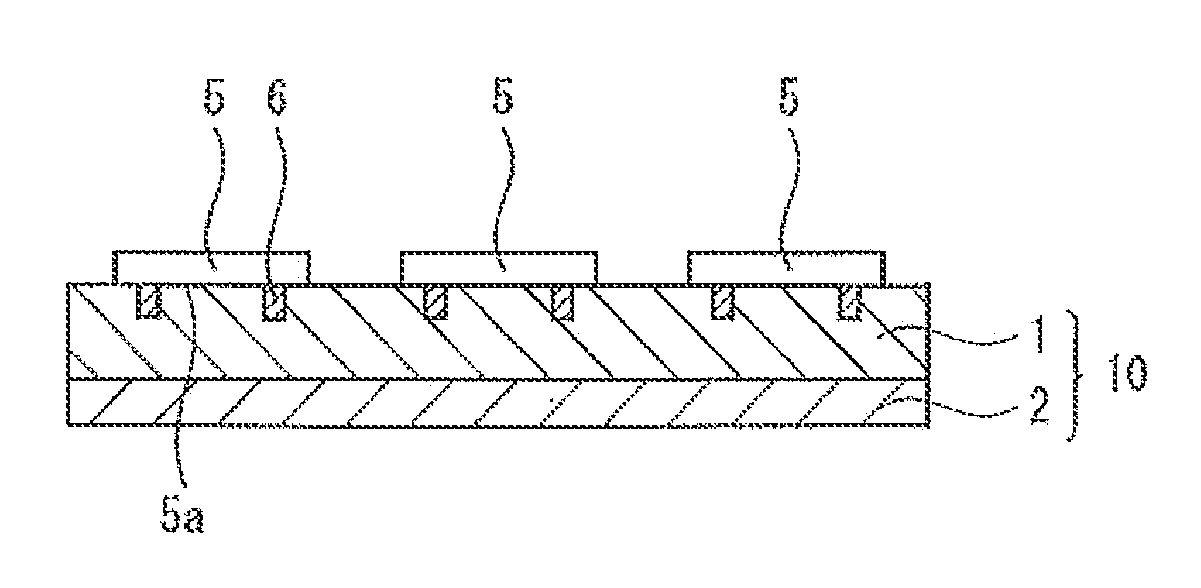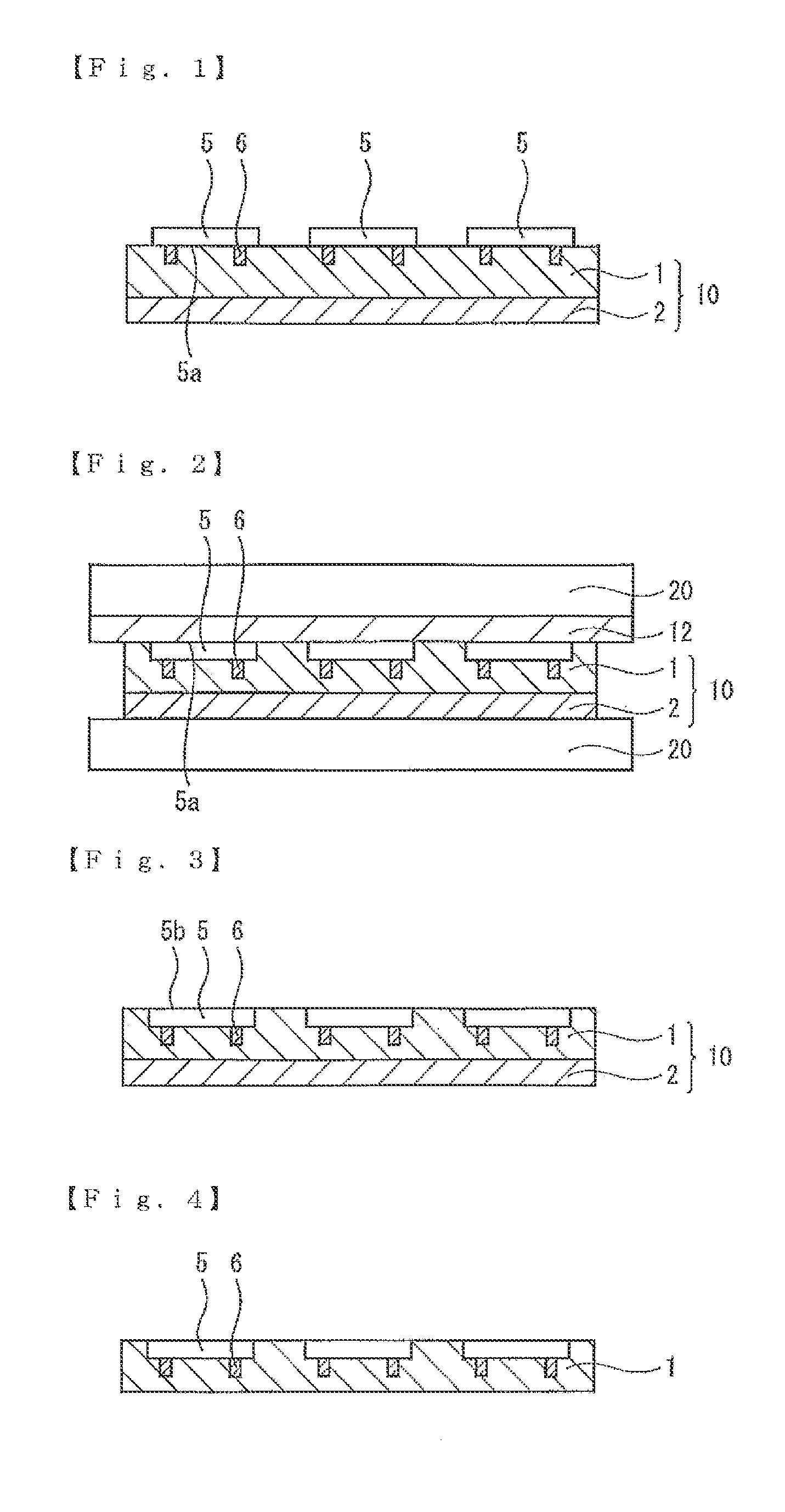Method of manufacturing semiconductor device
- Summary
- Abstract
- Description
- Claims
- Application Information
AI Technical Summary
Benefits of technology
Problems solved by technology
Method used
Image
Examples
second embodiment
[0125]The case is explained in the above-described first embodiment in which the conductive member 6 is exposed by the face side processing step, in which the surface is ground where the film 14 for a semiconductor backside of the thermosetting resin layer 1 is not pasted to (refer to FIG. 6). However, the method of exposing the conductive member 6 is not limited to this in the present invention, and the conductive member can be also exposed by a laser processing step from the thermosetting resin layer 1 side (a laser processing step). In this case, the laser processing step is performed instead of the face side processing step. FIG. 9 is a schematic sectional view showing a method of manufacturing a semiconductor device according to a second embodiment of the present invention. As shown in FIG. 9, laser processing is performed from the thermosetting resin layer 1 side to expose the conductive member 6 in the second embodiment. A carbon dioxide gas laser, a YAG laser, an excimer las...
third embodiment
[0126]The case is explained in the above-described first embodiment in which the plurality of semiconductor chips 5 are arranged on the thermosetting resin layer 1 and then embedded; that is, the semiconductor chip arranging step (step A) is performed, and then the semiconductor chip embedding step (step B) is performed. However, the method of embedding the semiconductor chips in the thermosetting resin layer is not limited to this in the present invention, and the semiconductor chips can be directly embedded in the thermosetting resin layer one by one. FIG. 10 is a schematic sectional view showing a method of manufacturing a semiconductor device according to a third embodiment of the present invention. As shown in FIG. 10, the semiconductor chips 5 can be directly embedded in the thermosetting resin layer 1 one by one in the third embodiment. A conventionally known flip-chip bonder 22 can be used for embedding. As the embedding conditions, the pressure is preferably 0.01 to 3 MPa, ...
fourth embodiment
[0128]The case is explained in the above-described first embodiment in which a plurality of semiconductor chips 5 are arranged on the thermosetting resin layer 1 so that the thermosetting resin layer 1 and the circuit forming surface 5a of the semiconductor chips 5 are facing each other in the semiconductor chip arranging step (step C) (refer to FIG. 1). However, the arrangement of the semiconductor chips is not limited to this in the present invention, and a plurality of semiconductor chips may be arranged on the thermosetting resin layer so that the thermosetting resin layer and the surface opposite to the circuit forming surface of the semiconductor chips are facing each other. FIGS. 11 and 12 are schematic sectional views showing a method of manufacturing a semiconductor device according to a fourth embodiment of the present invention. As shown in FIG. 11, a plurality of semiconductor chips 5 are arranged on the thermosetting resin layer 1 so that the thermosetting resin layer 1...
PUM
 Login to View More
Login to View More Abstract
Description
Claims
Application Information
 Login to View More
Login to View More - R&D
- Intellectual Property
- Life Sciences
- Materials
- Tech Scout
- Unparalleled Data Quality
- Higher Quality Content
- 60% Fewer Hallucinations
Browse by: Latest US Patents, China's latest patents, Technical Efficacy Thesaurus, Application Domain, Technology Topic, Popular Technical Reports.
© 2025 PatSnap. All rights reserved.Legal|Privacy policy|Modern Slavery Act Transparency Statement|Sitemap|About US| Contact US: help@patsnap.com



